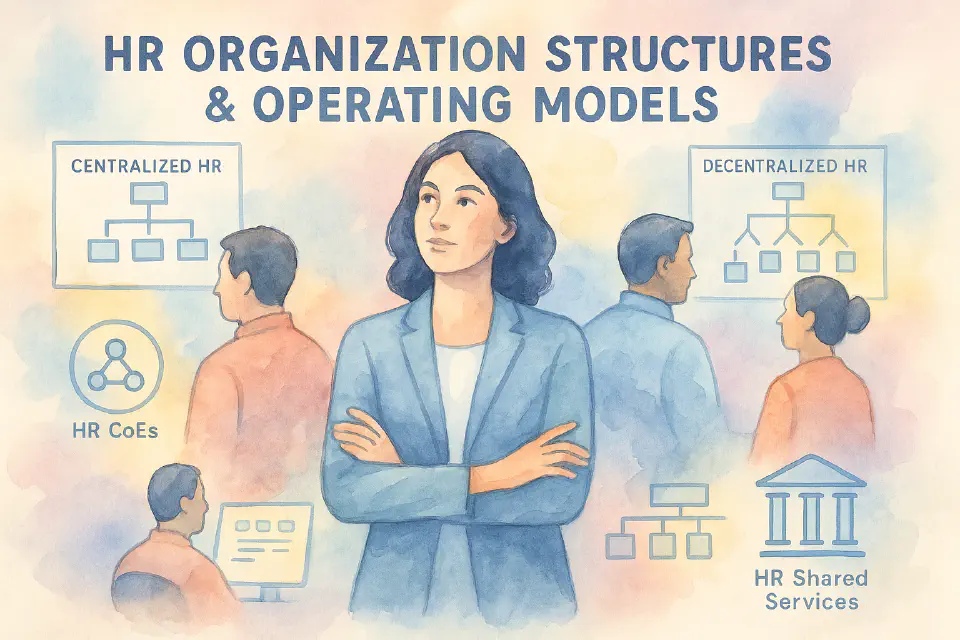
HR Organization Structures & Operating Models
The way HR is organized shapes everything—from strategic alignment to everyday service delivery. Structure is strategy in action.
Organizational structure is often treated as an administrative choice. In HR, it’s anything but. The way you organize your HR function reflects your strategic priorities, your growth stage, and how you want people initiatives to impact the business.
Structuring HR is not just about who reports to whom. It’s about how value flows through the system, how work is coordinated, and how different parts of HR collaborate—or compete.
Why Structure Matters in HR
An effective HR structure allows the function to:
- Align with business needs and evolving priorities
- Scale with organizational growth
- Enable both efficiency and specialization
- Build credibility through consistency and service quality
Common HR Operating Models
Different models have emerged over the years to meet diverse organizational needs. The right model depends on company size, industry, culture, and strategic ambition.
1. Centralized HR
All HR services and decision-making are consolidated into one unit. While it offers control and standardization, it can feel distant to business units.
2. Decentralized HR
Each business unit or region has its own HR team. This improves responsiveness and local customization but may lead to inconsistency and redundancy.
3. Matrixed HR
HR staff report to both a functional HR lead and a business or regional leader. This creates alignment but requires strong governance to avoid conflicts.
4. Hybrid Models
Combines central oversight with local delivery. This is increasingly common in global firms seeking both control and agility.
Key Structural Components
Regardless of the model, most modern HR functions share these components:
- Centers of Excellence (CoEs): Specialized teams focusing on areas like talent acquisition, learning, or rewards.
- HR Business Partners (HRBPs): Strategic advisors embedded within business units.
- HR Shared Services: Handling transactional tasks at scale (e.g., payroll, benefits).
- HR Leadership Team: Providing direction, governance, and accountability.
Structural Fit and Business Alignment
A “good” HR structure is one that supports the business model. For example:
- A high-growth tech company might prioritize agility and embed HRBPs in product teams.
- A mature manufacturer might value compliance and use strong central governance.
- A remote-first organization may favor digital-first HR service delivery.
Structural Evolution Over Time
As organizations evolve, so should HR structures. Mergers, international expansion, digital transformation—all demand periodic review.
Questions to Guide Design
- What work must HR do—and how should that work flow?
- What capabilities does the business need from HR today and tomorrow?
- Where is specialization required vs. where is generalist support sufficient?
- How will we measure effectiveness?
Final Thought
Structure is not static. It’s a living blueprint for how HR delivers value—and it should flex as your business changes. Strategic HR starts with structural intent.